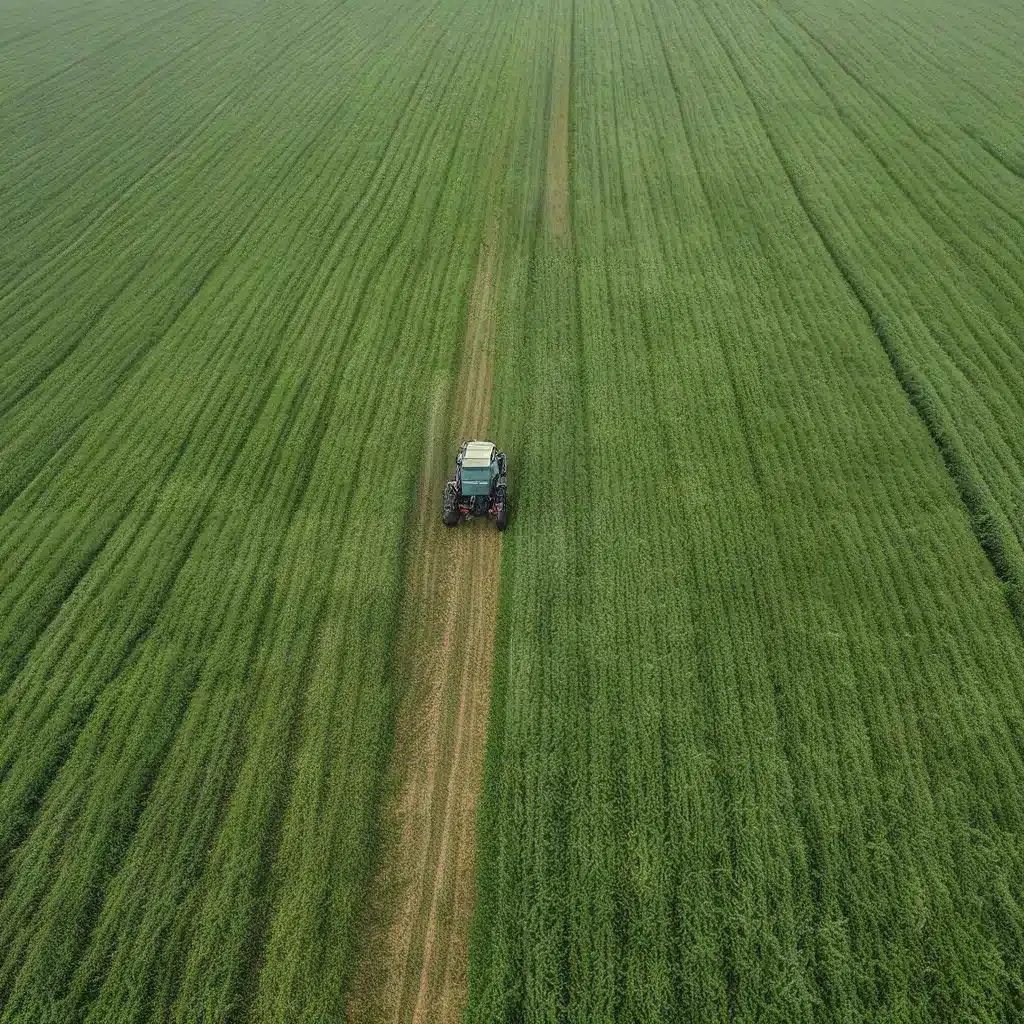
As the global population continues to grow, the demand for food production has never been higher. However, traditional agricultural practices often come at a cost to the environment, leading to issues like excessive fertilizer runoff, water waste, and soil degradation. That’s where sensor networks and Internet of Things (IoT) technologies step in, revolutionizing the way we approach modern farming.
The Rise of Precision Agriculture
Precision agriculture is a data-driven approach that leverages advanced technologies to improve resource management and optimize agricultural production. At the heart of this revolution are sensor networks, which enable farmers to collect and analyze real-time data on soil moisture, nutrient levels, weather patterns, and more.
According to the US Government Accountability Office, precision agriculture technologies, such as GPS-guided equipment and activity monitoring sensors, can help farmers make more informed decisions, leading to increased profitability and environmental benefits.
One of the key advantages of precision agriculture is the ability to precisely apply inputs, such as water, fertilizer, and feed, only where and when they are needed. This targeted approach not only reduces waste but also minimizes the environmental impact of agricultural practices.
Sensor Network Architectures for Precision Farming
Sensor networks in precision agriculture typically follow a hierarchical or mesh network topology. In a hierarchical setup, sensor nodes are arranged in a tree-like structure, with base stations or gateways aggregating and transmitting data to a central control system.
Alternatively, mesh networks allow sensor nodes to communicate directly with each other, creating a more resilient and decentralized system. This topology is particularly useful in areas with challenging terrain or limited infrastructure, as it reduces the need for a dense network of base stations.
Regardless of the topology, the sensor nodes themselves are designed to be low-power and cost-effective, often powered by renewable energy sources like solar panels or wind turbines. This ensures long-lasting operation and energy efficiency in the field.
IoT Applications in Precision Agriculture
The integration of IoT technologies with sensor networks has opened up a wealth of possibilities for precision agriculture. Here are a few notable examples:
-
Precision Irrigation: Smart irrigation systems use soil moisture sensors and weather data to optimize water usage, reducing waste and ensuring crops receive the right amount of water at the right time.
-
Livestock Monitoring: Activity trackers and GPS-enabled collars can monitor the health and behavior of livestock, helping farmers detect illnesses or optimize feed and grazing patterns.
-
Crop Health Monitoring: Drones and satellite imagery, combined with sensor data, can provide detailed analysis of crop health, allowing farmers to identify and address issues before they escalate.
-
Predictive Analytics: By integrating sensor data with historical records and weather forecasts, machine learning algorithms can help farmers anticipate and prepare for events like disease outbreaks, pests, or adverse weather conditions.
Addressing Challenges in Sensor Network Adoption
While the benefits of precision agriculture are well-documented, there are still some challenges hindering the widespread adoption of these technologies. According to the US Government Accountability Office, these include:
-
Complexity: Integrating and managing a comprehensive sensor network can be a daunting task for some farmers, requiring specialized expertise and training.
-
High Upfront Costs: The initial investment in precision agriculture technologies can be significant, making it difficult for small-scale or resource-constrained farmers to access these tools.
-
Lack of Interoperability: The fragmented nature of the precision agriculture technology market can lead to compatibility issues and make it challenging for farmers to seamlessly integrate different systems.
To address these challenges, policymakers and industry stakeholders are exploring various policy options, such as:
- Providing Financial Assistance: Offering grants, subsidies, or tax incentives to help farmers offset the upfront costs of precision agriculture technologies.
- Investing in Research and Development: Increased funding for academic and government-led R&D can drive innovation and improve the accessibility and user-friendliness of these technologies.
- Promoting Education and Training: Developing educational programs and technical support resources to help farmers understand and implement precision agriculture practices effectively.
Enhancing Sensor Network Security and Privacy
As sensor networks become more ubiquitous in precision agriculture, the security and privacy of the collected data have become increasingly important considerations. Cybercriminals could potentially exploit vulnerabilities in these networks to gain unauthorized access, disrupt operations, or steal sensitive information.
To mitigate these risks, sensor network designers are implementing robust security protocols and encryption techniques, such as end-to-end encryption, secure authentication, and intrusion detection systems. Additionally, data anonymization and access control policies are being employed to protect the privacy of farmers and their operations.
Sustainable Energy Management for Sensor Networks
One of the key challenges in deploying sensor networks for precision agriculture is energy management. Sensor nodes are often located in remote areas with limited access to grid electricity, making power supply a critical consideration.
To address this, sensor network designers are exploring innovative energy-harvesting technologies, such as solar panels, wind turbines, and piezoelectric generators, which can recharge or directly power the sensor nodes. Additionally, low-power sensor designs and energy-efficient communication protocols are being developed to minimize the overall energy consumption of these systems.
The Future of Sensor-Enabled Precision Agriculture
As the global population continues to grow and the demand for food production increases, the role of sensor networks and IoT technologies in precision agriculture will only become more crucial. By leveraging these advanced tools, farmers can optimize resource usage, improve yields, and enhance the sustainability of their operations, all while mitigating the environmental impact of traditional agricultural practices.
Through ongoing research, policy support, and collaborative efforts between industry, government, and academia, the sensor-enabled precision agriculture revolution is poised to transform the way we produce and consume food, paving the way for a more efficient, eco-friendly, and productive agricultural future.
To stay up-to-date on the latest developments in this field, be sure to visit https://sensor-networks.org/, a leading resource for sensor network enthusiasts, IoT professionals, and precision agriculture experts.